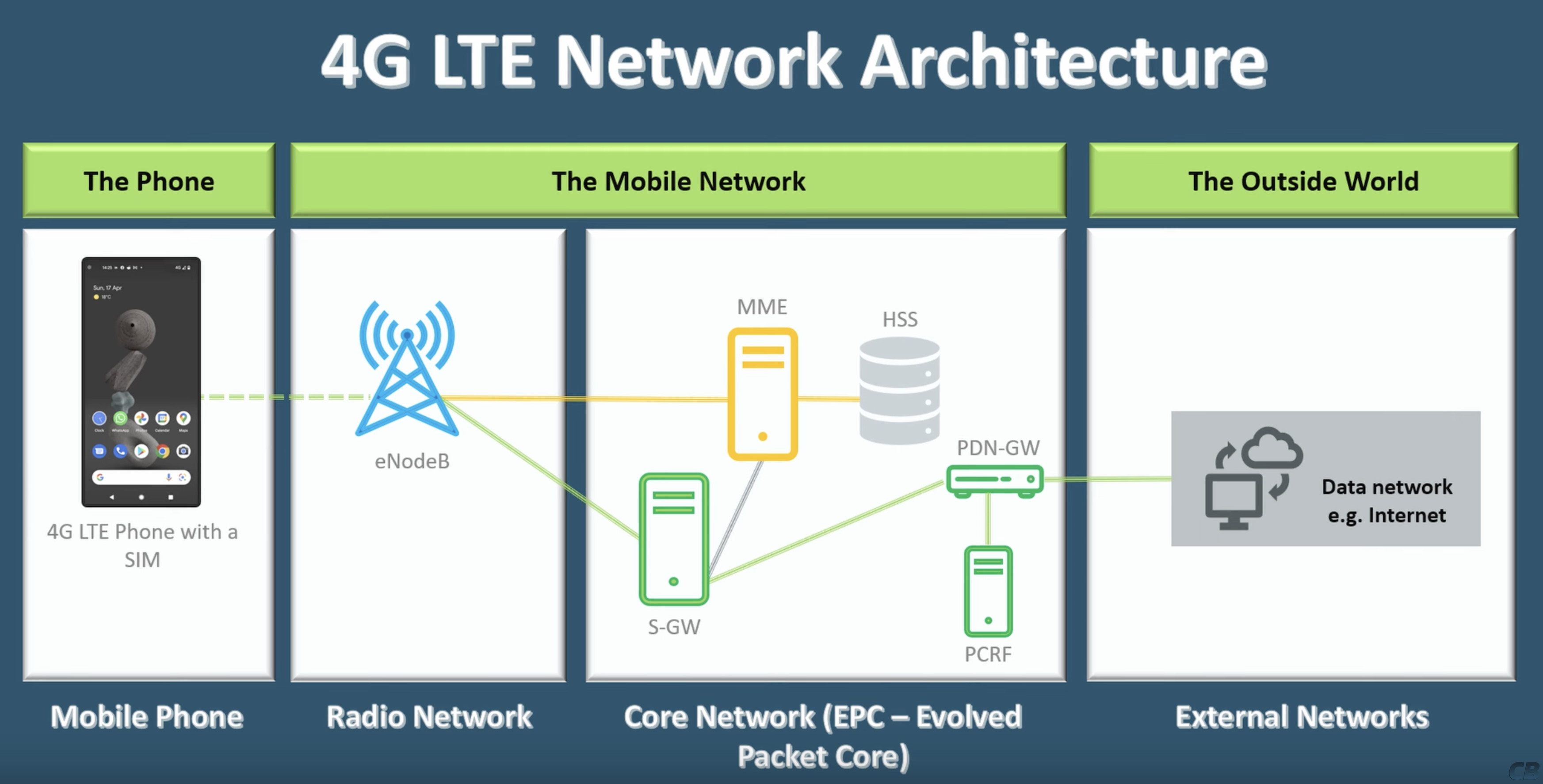Architecture and Main Features of LTE Network
The LTE (Long Term Evolution) network architecture is divided into two main parts: the E-UTRAN (Evolved Universal Terrestrial Radio Access Network) and the EPC (Evolved Packet Core). Together, they form the foundation for high-speed wireless communication. Below is a description of each component and its features.

1. E-UTRAN (Evolved Universal Terrestrial Radio Access Network)
Main Features:
- High Data Rates: LTE supports peak download rates of up to 3 Gbps and upload rates of up to 1.5 Gbps.
- Low Latency: Ensures minimal delays in communication, with user-plane latency typically around 10 ms.
- Scalable Bandwidth: Supports bandwidths from 1.4 MHz to 20 MHz.
- OFDM and MIMO: Uses Orthogonal Frequency-Division Multiplexing (OFDM) for downlink and Single Carrier-Frequency Division Multiple Access (SC-FDMA) for uplink, along with Multiple Input Multiple Output (MIMO) technology for improved spectral efficiency.
- Simplified Architecture: No circuit-switched elements; the architecture is entirely packet-switched.
Key Node:
- eNodeB (Evolved Node B):
- Acts as the LTE base station.
- Handles all radio-related functions like resource management, scheduling, and handovers.
- Interfaces directly with the UE (User Equipment) and the EPC (via the S1 interface).
- Supports functions such as radio access control, mobility management, and QoS provisioning.
2. EPC (Evolved Packet Core)
The EPC is the core network of LTE, responsible for the management of data and signaling.
Main Features:
- All-IP Network: Enables IP-based communication for both voice and data services.
- Seamless Mobility: Provides support for interworking with legacy networks like GSM and UMTS.
- QoS Management: Ensures differentiated service levels for various applications.
- Session Management: Manages user sessions and mobility.
Key Nodes:
-
MME (Mobility Management Entity):
- Handles signaling and control functions.
- Manages UE authentication, mobility, and bearer activation.
- Coordinates handovers between eNodeBs and interacts with the HSS for user data.
-
HSS (Home Subscriber Server):
- Central database containing subscription-related information.
- Stores user profiles, authentication credentials, and QoS parameters.
-
SGW (Serving Gateway):
- Routes and forwards user data packets.
- Acts as the anchor point for intra-LTE handovers.
- Buffers packets during handovers.
-
PGW (Packet Data Network Gateway):
- Connects the LTE network to external IP networks such as the internet.
- Handles IP address allocation, QoS enforcement, and charging.
-
PCRF (Policy and Charging Rules Function):
- Defines and enforces policies for QoS and charging based on subscriber profiles.
Roles of Nodes in LTE Network
| Node | Role |
|---|---|
| eNodeB | Provides radio access, resource scheduling, and supports user mobility. |
| MME | Handles signaling, authentication, and session management. |
| HSS | Acts as a subscriber database for authentication and service authorization. |
| SGW | Routes user data packets and anchors handovers. |
| PGW | Connects to external networks, assigns IPs, and enforces QoS. |
| PCRF | Manages policy control and charging decisions. |
Summary
The LTE network architecture achieves high-speed, low-latency, and scalable communication through the combined efforts of E-UTRAN and EPC. The eNodeB serves as the access point for UEs, while the EPC nodes ensure seamless management of data, signaling, and policy enforcement.